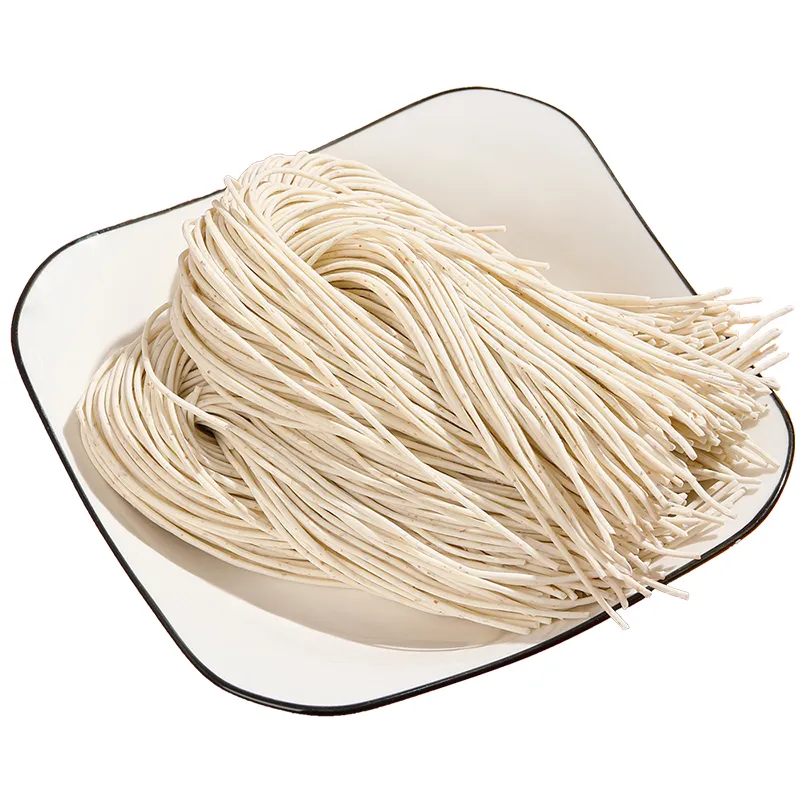types of udon noodles
The Diversity of Udon Noodles A Cultural Exploration
Udon, the thick and chewy Japanese noodle made from wheat flour, is a staple in Japanese cuisine. Known for its versatility and delightful texture, udon noodles come in various types, each offering a unique taste and culinary experience. This article delves into the different types of udon noodles, their characteristics, and how they are enjoyed in various dishes.
1. Plain Udon (Kake Udon)
Kake udon is the most basic form of udon and serves as the foundation for many other dishes. These noodles are served in a simple broth made of dashi (a Japanese stock), soy sauce, and mirin, creating a comforting meal that highlights the udon's chewy texture. Kake udon is often topped with green onions, tempura flakes, or a slice of kamaboko (fish cake), allowing the simplicity of the dish to shine.
2. Curry Udon
Curry udon is a heartier variation that combines udon noodles with a rich, flavorful curry sauce. The curry is typically made with a mix of vegetables, meat, and spices, creating a warming dish perfect for colder months. The thick, chewy udon noodles absorb the bold flavors of the curry, making each bite a satisfying culinary experience. This dish showcases the adaptability of udon noodles, allowing them to pair wonderfully with various flavor profiles.
3
. Yaki UdonYaki udon refers to stir-fried udon, where the noodles are cooked with a variety of ingredients, including vegetables, meat, and often a savory sauce. This dish is a fantastic way to enjoy udon in a different context. The stir-frying process gives the noodles a slightly crispy texture while retaining their characteristic chewiness. Common additions include cabbage, bell peppers, and proteins like chicken or shrimp, making yaki udon a well-rounded meal.
4. Nabeyaki Udon
types of udon noodles

Nabeyaki udon is a delicious hot pot dish that showcases udon noodles cooked in a clay pot. Traditionally, this style includes ingredients such as chicken, mushrooms, and seasonal vegetables, all simmered together in a savory broth. Nabeyaki udon is often topped with a raw egg that cooks as the dish is served. This communal dish not only warms the body but also provides a delightful social dining experience, as families and friends gather around the pot.
5. Cold Udon (Zaru Udon)
In contrast to the warm varieties, zaru udon is a refreshing dish that highlights udon’s versatility in warmer months. The noodles are boiled and then cooled in cold water before being served on a bamboo mat with a dipping sauce called tsuyu. Diners can enjoy the chewy texture of the udon by dipping it into the flavorful sauce made from dashi, soy sauce, and mirin. It’s a simple yet elegant dish that emphasizes the quality and freshness of the noodles.
6. Tempura Udon
Tempura udon combines the peculiar delight of crispy tempura with warm, soft udon noodles. The dish typically features a bowl of kake udon topped with an assortment of tempura, such as shrimp, sweet potato, or vegetables. The juxtaposition of the hot, chewy noodles with the crisp tempura creates a satisfying contrast that pleases the palate.
7. Vegetable Udon (Yasai Udon)
For those seeking a lighter option, yasai udon includes a variety of seasonal vegetables added to the noodle dish. Common ingredients include carrots, broccoli, and mushrooms, all sautéed or lightly boiled before being served with the noodles in broth or stir-fried. This dish not only enhances the nutritional value but also introduces vibrant colors and flavors, making it as visually appealing as it is tasty.
Conclusion
Udon noodles are a canvas for creativity, each type offering a different experience rooted in traditional Japanese cuisine. From the comforting warmth of kake udon to the refreshing bite of zaru udon, the diversity of udon reflects regional influences and personal tastes. Whether served in a cozy restaurant or prepared at home, these versatile noodles continue to be a beloved choice for many, showcasing the rich culinary heritage of Japan. Enjoying udon in its various forms is not just about the food itself but also about gathering with loved ones and sharing a delicious meal together.
-
Is Whole Wheat Pasta Healthy?NewsMay.30,2025
-
Are Soba Noodles Good for Weight Loss?NewsMay.30,2025
-
Are Buckwheat Soba Noodles Healthy?NewsMay.30,2025
-
Are Buckwheat Soba Noodles Gluten Free?NewsMay.30,2025
-
Are Buckwheat Noodles Good for You?NewsMay.30,2025
-
A Healthy Way to Savor Soba and Spicy FlavorsNewsMay.30,2025
-
What Are Lanzhou Noodles?NewsMay.30,2025
Browse qua the following product new the we

















































































































